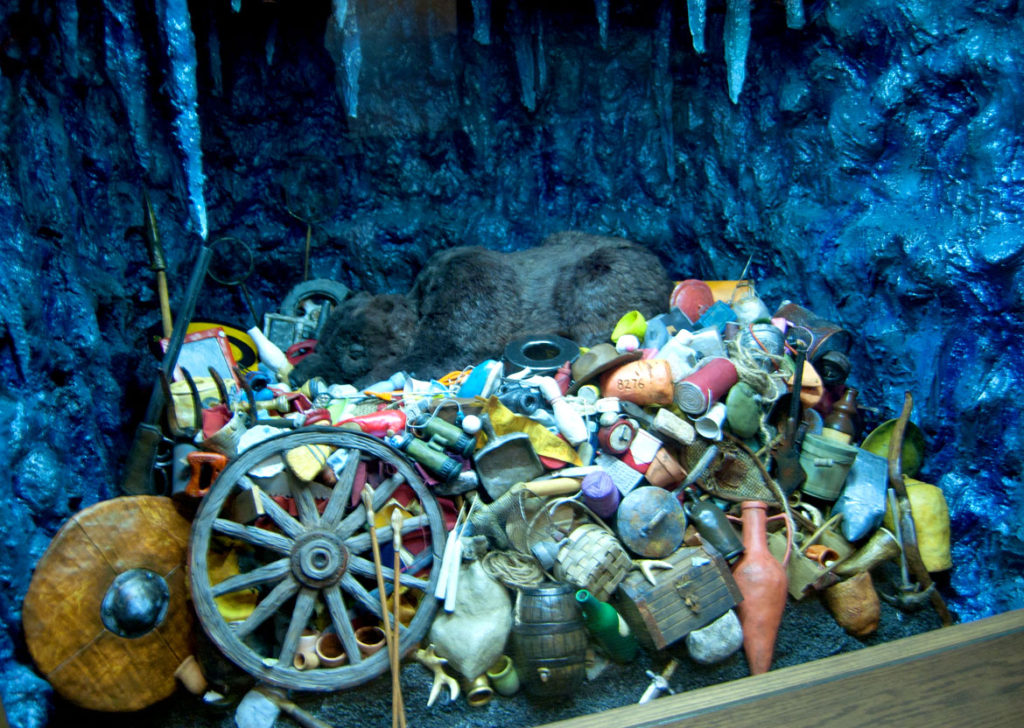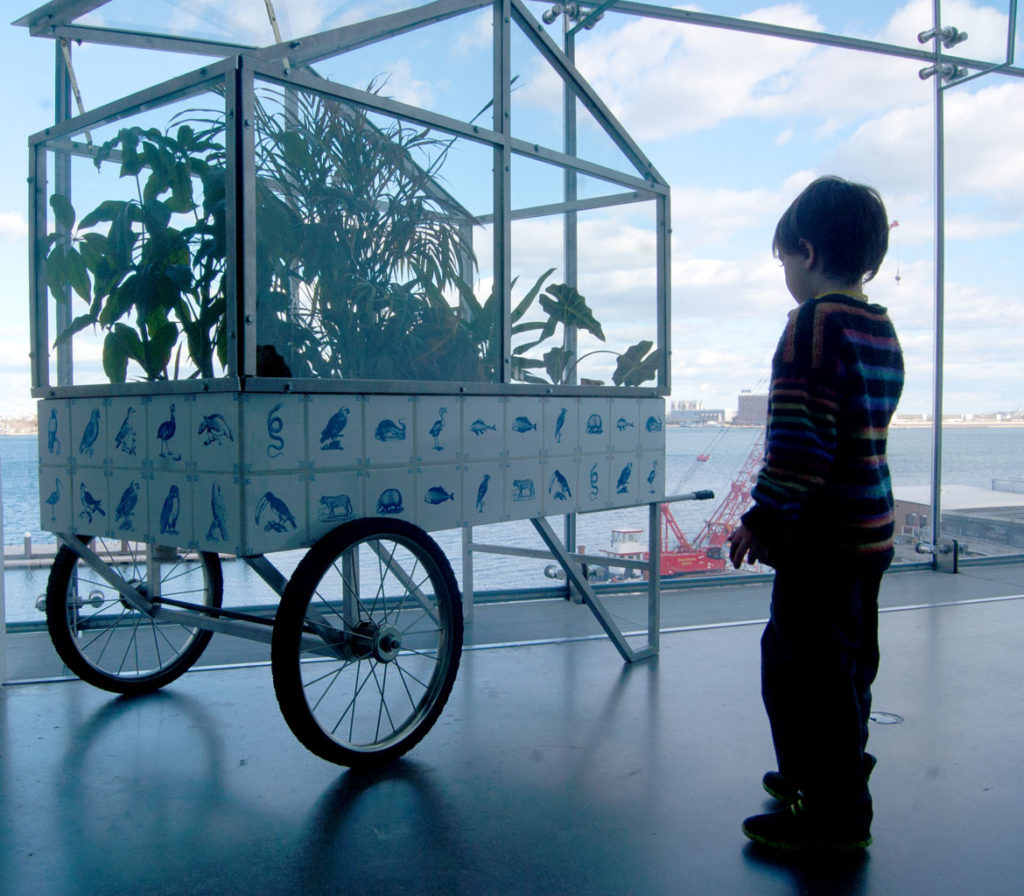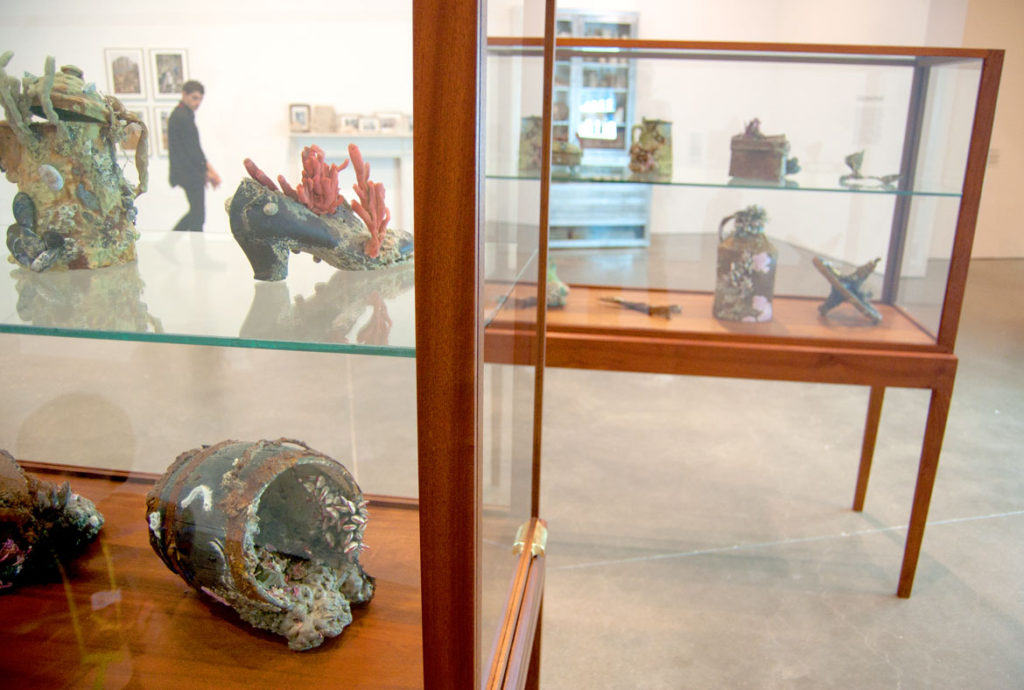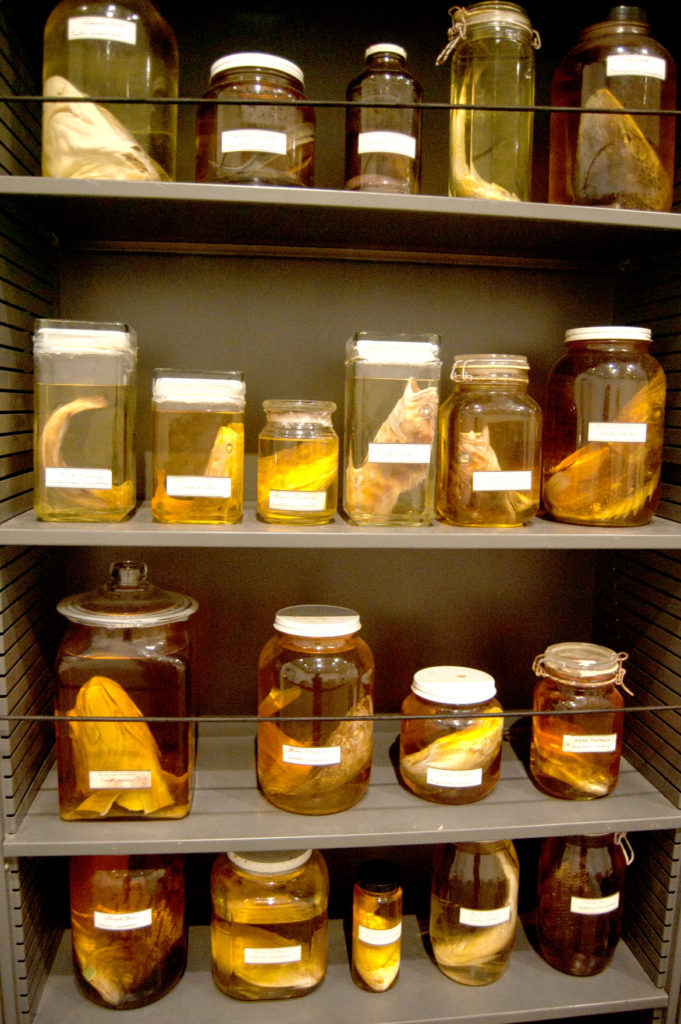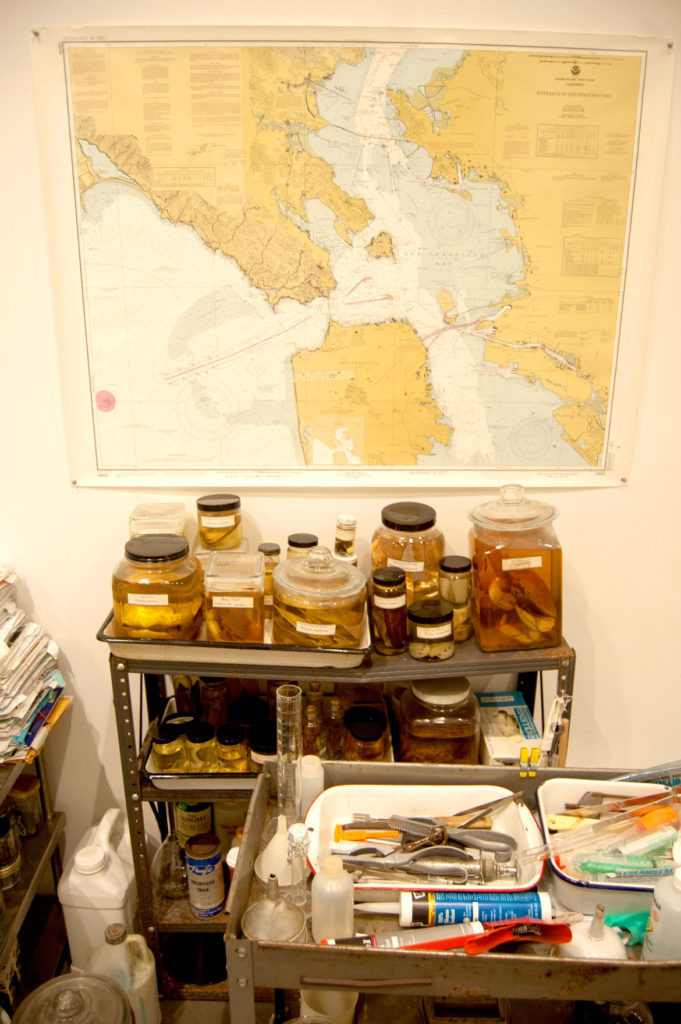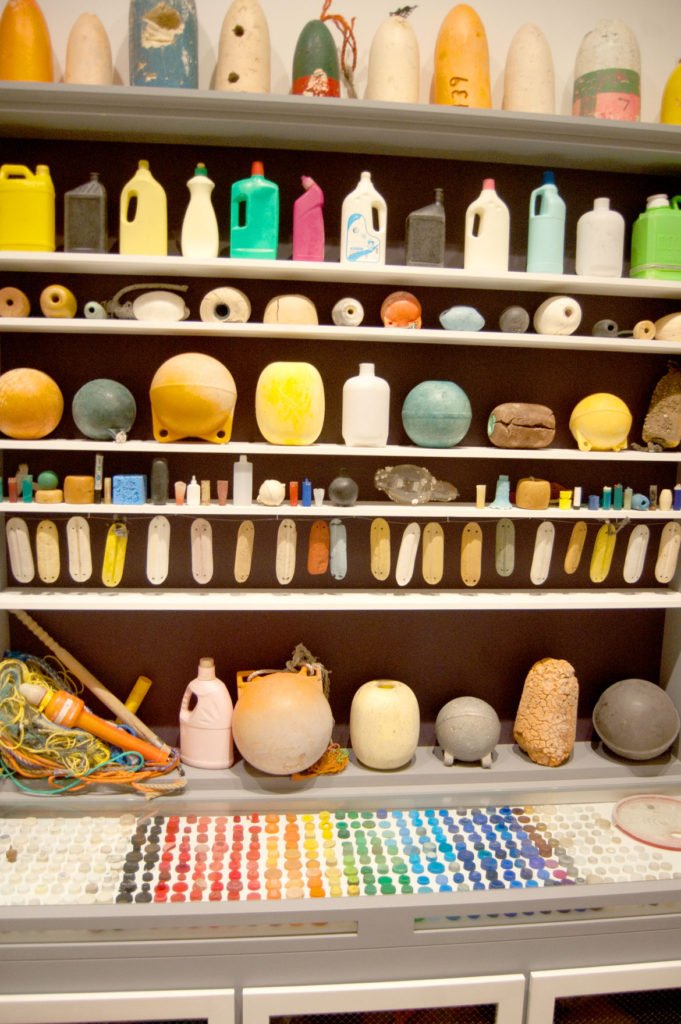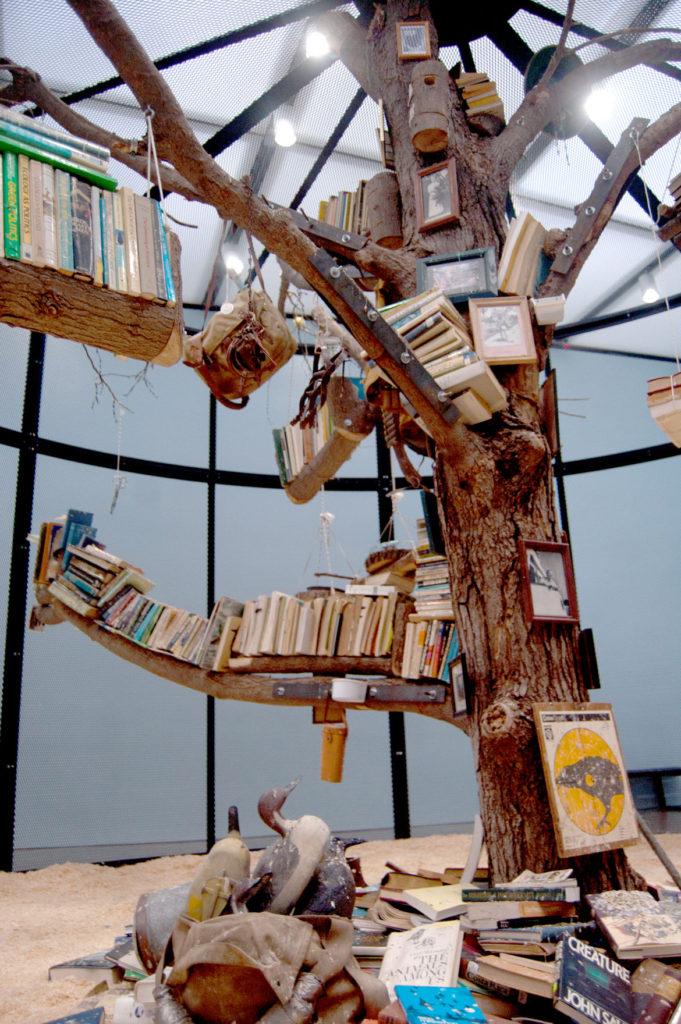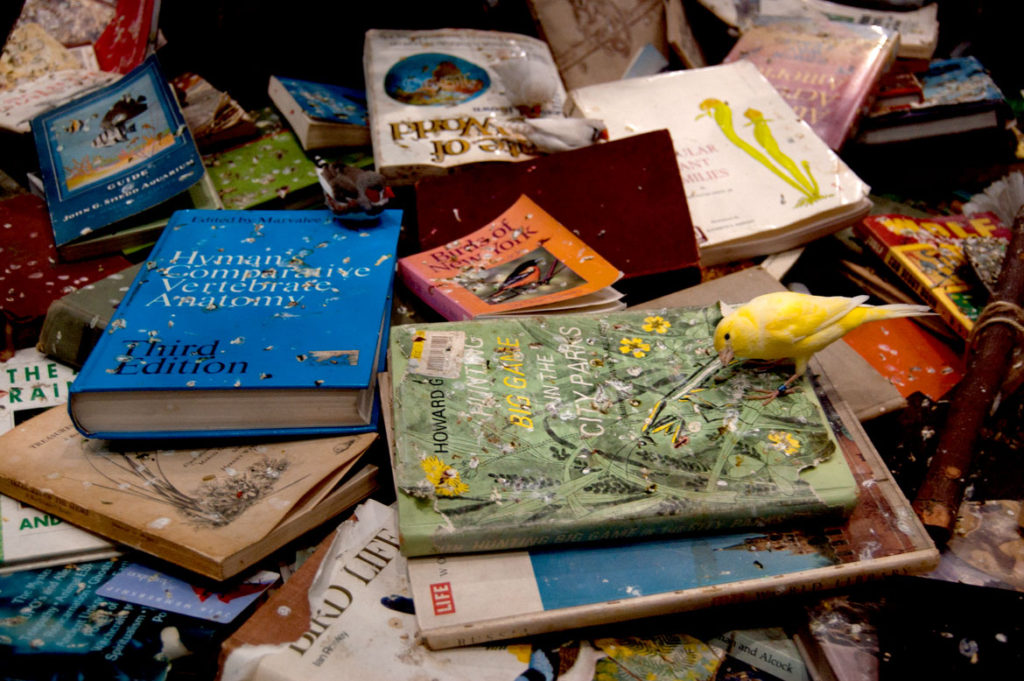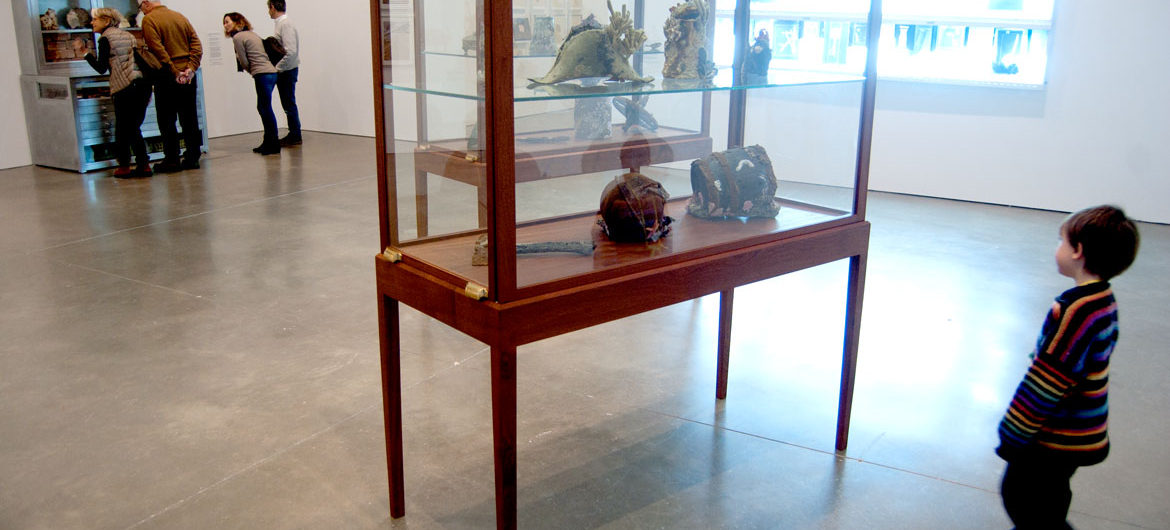The 4-year-old and I are on the MBTA’s Silver Line heading to see the exhibition “Mark Dion: Misadventures of a 21st-Century Naturalist” at Boston’s Institute of Contemporary Art (through Dec. 31, 2017). We had boarded with a bunch of people carrying luggage, apparently heading to the airport. I ask the 4-year-old where he would like to travel.
“Tasmania,” the 4-year-old says. “To look for the Tasmanian tiger.”
The Tasmanian tiger is believed to have gone extinct in the 20th century. But the 4-year-old has heard about it from a kids television show, and hopes beyond hope that the tiger still roams … and that he can find it.
We walk over from the Silver Line stop, along the harbor, to the ICA. One of the first rooms of the Dion retrospective is decorated with wallpaper depicting extinct creatures—the dodo, passenger pigeon, some sort of rhino, wooly mammoth and … the Tasmanian tiger.
“It was kind of sad. Because Tasmanian tigers are my favorite animals of all the animals,” the 4-year-old says.
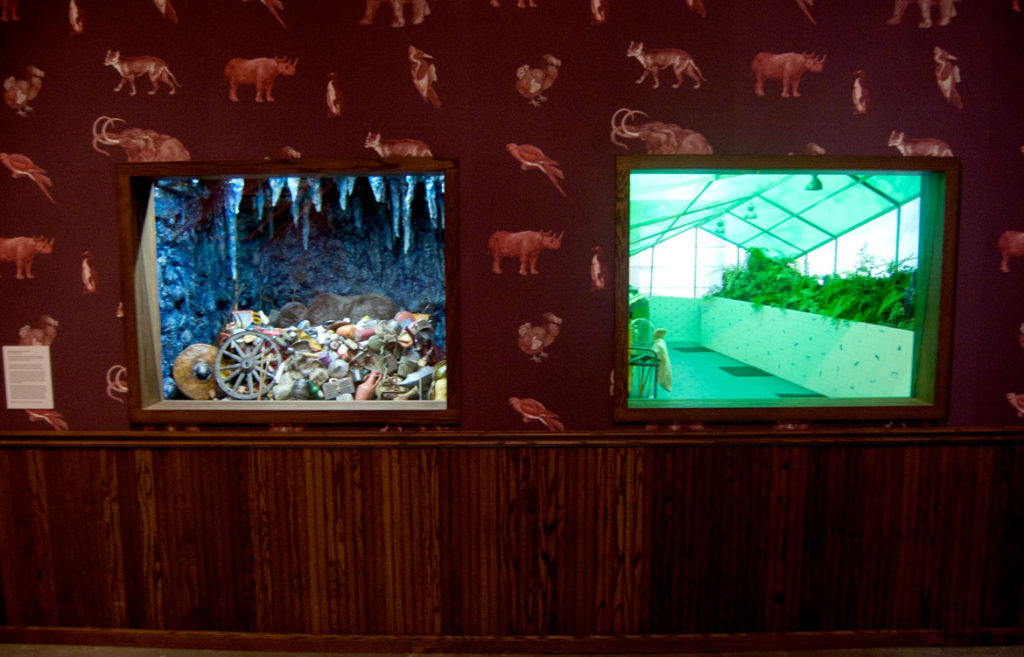
Mark Dion is a New York-based artist who creates installations resembling scientists’ laboratories or natural history museums to addresses people’s interactions with nature—often about how we humans hurt nature. It is a subject our 4-year-old—like many 4-year-olds—cares passionately about as well. While the art intrigues grow-ups, Dion’s presentations are also engaging and understandable to young children.
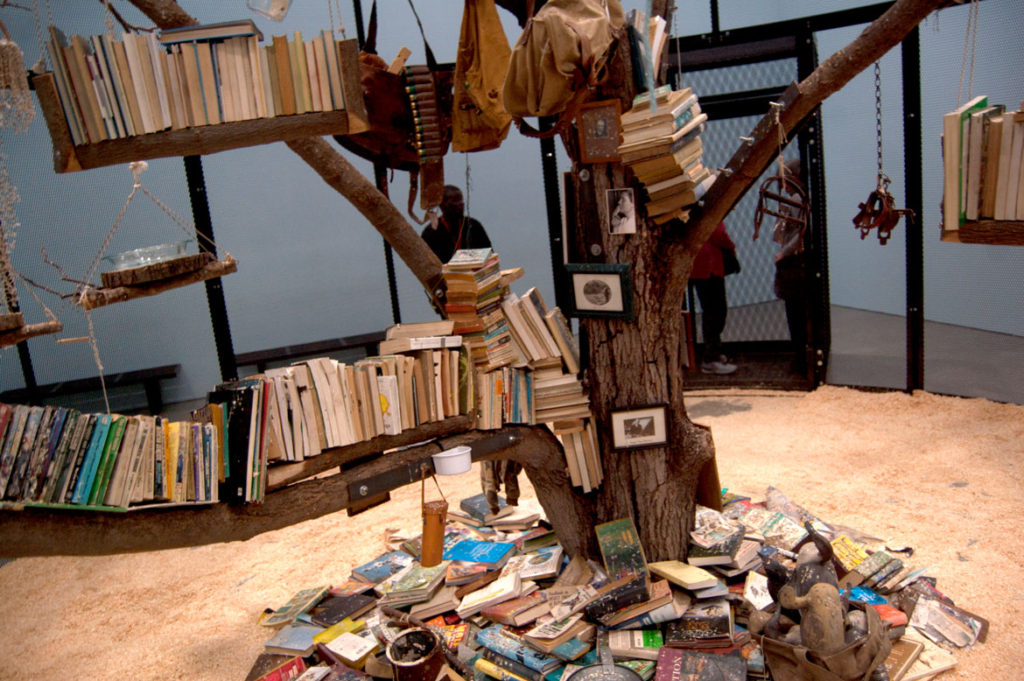
Dion’s “The Library for the Birds of New York/The Library for the Birds of Massachusetts” (2016/2017), allows you to walk into a giant birdcage with 18 zebra finches and four canaries fluttering around a dead tree inside. Traps and duck decoys and books (“Hunting Big Game in the City Parks”) hang from the tree or are arranged around its base—and are speckled with bird droppings. The 4-year-old stays for a while, a bit nervous about the birds’ flight paths, but excited.
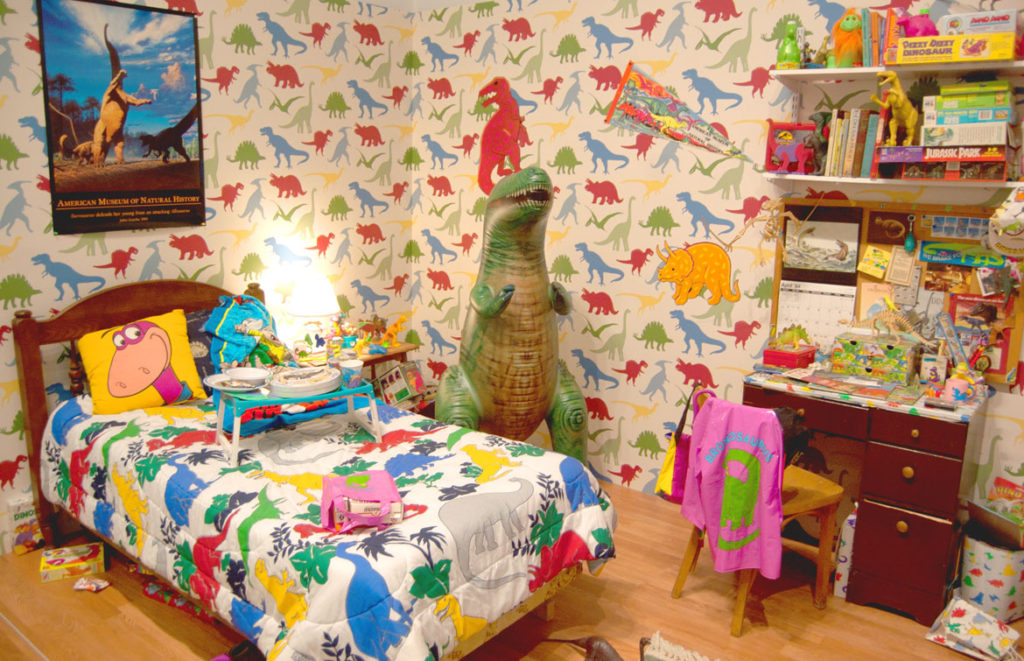
Dion’s 1994 installation “Toys ‘R’ U.S. (When Dinosaurs Ruled the Earth)” imagines a kid’s bedroom decorated with dinosaurs to a crazy degree—bedspread, toys, games, wallpaper, posters, on and on. It evokes our grown-up culture’s fascination with the extinct beasts—but also speaks about our culture of disposable consumerism and over consumption. For the 4-year-old, it is the bedroom of his dreams.

Dion repeatedly circles around all the junk with which we pollute the earth. His 2014 “Cabinet of Marine Debris” features actual bottle caps, buoys and flip-flops he found washed up on the coast of Alaska. His 2000 installation “Landfill” is like a natural history museum’s life-size diorama of gulls and other critters feeding on a garbage dump. “That looks like a small crow right there and a dog and a pigeon, a seagull,” the 4-year-old says. The message? “Earth is being littered.”

Sometimes Dion plays at being a scientist. His 1998 installation “The Department of Marine Animal Identification of the City of San Francisco (Chinatown Division)” pretends to be a laboratory. In fact, the artist went to markets in San Francisco’s Chinatown and bought fish there and then put them in jars like specimens.
“What?!?” the 4-year-old says. “That idiot. He collected those specimens from the wrong place.”

The 4-year-old was fascinated by the coral, taxidermied goose, taxidermied cat, mushrooms and a copy of “Alice’s Adventures in Wonderland” neatly arranged on the steps of the freestanding stairway of Dion’s 2017 “The Classical Mind (Scale Naturae and Cosmic Cabinet).”
A sign explained that the artwork “represents destructive ways in which ancient philosophies have influenced human understandings of the world. The staircase references the Great Chain of Being, a hierarchical scheme for organizing nature with roots in the thought of the Greek philosopher Aristotle.” The 4-year-old carefully photographed each step.
Along the side of the stairway is a door. Inside you find a darkened room and bench on which you can sit. We couldn’t tell just from experiencing it, but a sign explains that it was meant to represented an “astronomical system that places humanity at the center of the universe.” Mostly it was just a secret hideout to sit quietly for a minute and experience the magic. “It’s like a planetarium,” the 4-year-old says. “You could see stars on the ceiling.”
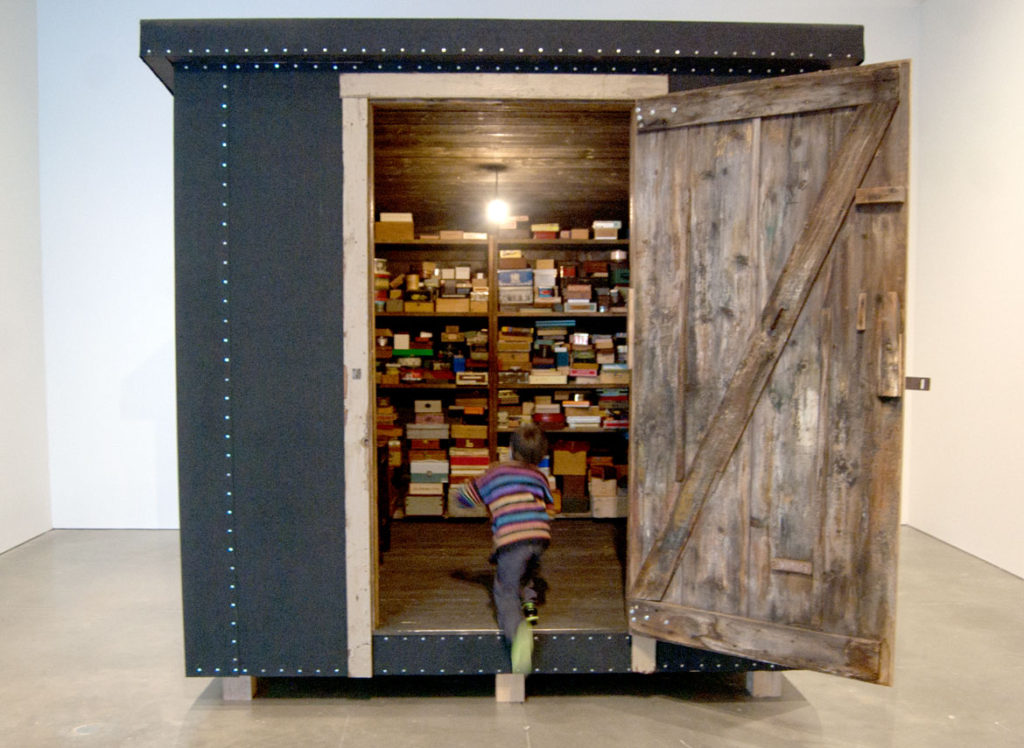
The 4-year-old resents rules prohibiting touching things at museums, so he is fond of Dion’s 2016 “Memory Box,” a wooden shed which you’re invited to walk inside and rummage through boxes stacked on shelves along the back wall. Dion has said, “I want to provoke a childlike curiosity and the anxiety of looking through your mother and father’s chest of drawers when they’re not home.”
“Look, I’ll find the smallest one,” the 4-year-old says. He opens boxes containing toy guns, a metal horse, slides, a View-Master, little plastic people, cards printed with pictures of animals, until he is satisfied that he has located the smallest box. Inside is a tiny set of pulleys.
“That was weird,” the 4-year-old says. “Because you get to touch the boxes.”
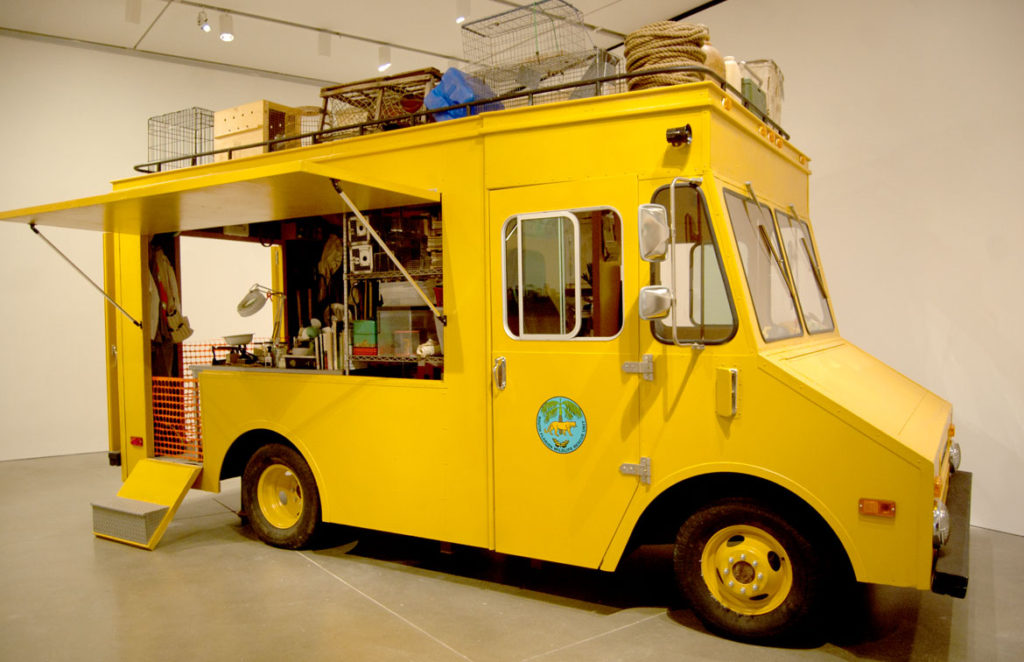
A yellow truck, Dion’s 2006 “South Florida Wildlife Rescue Unit: Mobile Laboratory,” nearly fills one gallery. It’s the manifestation of a fantasy—a vehicle to rush out to rescue South Florida flora and fauna when real estate development threatens natural habitats.
“I like nature,” the 4-year-old notes. “If every animal goes extinct, what are we going to do?”
Help us keep producing our great coverage of local arts by contributing to Wonderland’s Launch Fundraiser. And sign up for our free, weekly newsletter so that you don’t miss any of our reporting.
